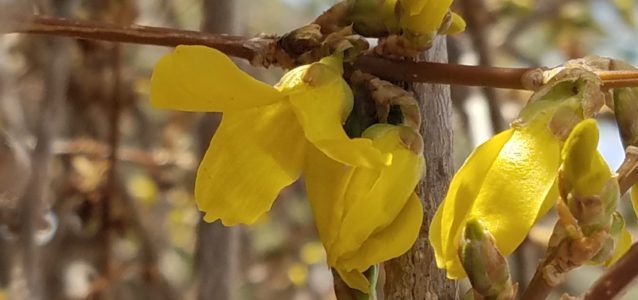April is Stress Awareness Month. Since the Spring season is often thought of as a time of hope and renewal, I want to focus on simple cues we can take from nature, and how we can use our five senses to help soothe feelings of stress.
Sight
Here in Nevada, we are blessed with 300+ days of sunshine a year. We are not as prone to Seasonal Affective Disorder as regions whose winters are characterized by grey skies. But the not so subtle emergence of green on our hills, followed closely by the vibrant pink, purple and yellow wildflowers stirs feelings of hope and energy that may have been dormant in Winter. In the field of color psychology, relied upon heavily in marketing, greens and yellows are associated with feelings of peace, growth and optimism, while shades of pink and purple are associated with energy, creativity and possibility.
Sound
Winter is often characterized as hushed, while the world is blanketed in snow. But with warmth comes movement, and with movement comes sound. Two sounds that I associate with Spring are the sound of water and wind. There has been extensive research on the effects of different sound frequencies on our brainwaves. Many sounds in nature that we associate with feelings of calm resonate at frequencies that have been shown to slow the heart rate. The babble of a gentle stream over rocks or a soft breeze rustling through leaves can soothe the mind and encourage relaxed breathing. This is why wind chimes and table top water features are common in yoga studios and spas.
Smell
As an aromatherapist, I turn to the florals for soothing, calming scents. Flowers are associated with new growth and opportunity. The fragrance combination of lavender and chamomile is commonly used in candles or linen sprays aimed at supporting restful sleep. Leaves help plants breath, so fragrances like eucalyptus, cypress and rosemary can help open and deepen our breath when we are feeling stressed.
Taste
Closely tied to our sense of smell, certain flavors are associated with feelings of calm. Again, lavender and chamomile teas are used for relaxation. There has been a good deal of research on foods that support brain health and help reduce anxiety. Turmeric, used for ages in Ayurvedic and Traditional Chinese Medicine practices, is now recognized in western medicine for its ability to reduce anxiety and inflammation.
Touch
The Touch Research Institute at the University of Miami, Miller School of Medicine is dedicated to exploring the effects of touch on different health conditions. They, as well as other research institutes, have conducted countless studies on the effects of touch on stress and anxiety levels on people of all ages. The studies have shown that positive, caring touch can reduce the stress hormone cortisol and increase the “feel good” hormones serotonin and dopamine. Conversely, touch depravation has been shown to increase stress and anxiety.
So during this Stress Awareness Month, I challenge you to see how many different ways you can use your senses to decrease feelings of stress and increase feelings of hope and optimism. At Connective Touch Therapeutic Massage, at least one of your senses is covered.
Slainte! (An Irish toast to health)







 After receiving her Bachelor of Science from Virginia Commonwealth University in 1992, Meaghan moved to Miami, Florida and worked as a Therapeutic Recreation Specialist providing group and individual therapy to patients in both psychiatric and sub-acute physical rehabilitation hospitals
After receiving her Bachelor of Science from Virginia Commonwealth University in 1992, Meaghan moved to Miami, Florida and worked as a Therapeutic Recreation Specialist providing group and individual therapy to patients in both psychiatric and sub-acute physical rehabilitation hospitals